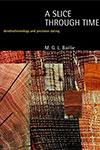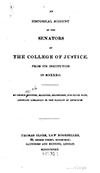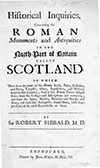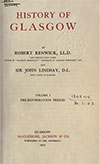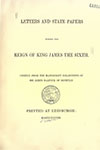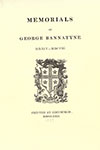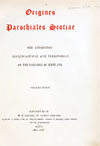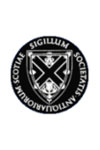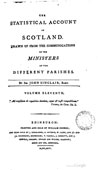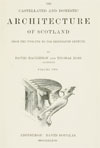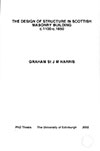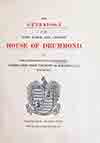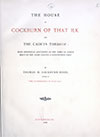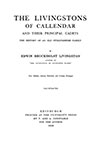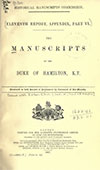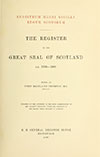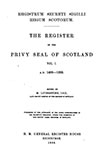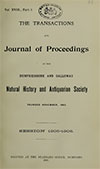

Midhope Castle is a 16th century tower house on the Hopetoun estate.
An Alan de Midhope is mentioned in connection with Edward I of England’s garrison of Dumfries Castle in 1300 however he would appear to have hailed from a Midhope in Yorkshire rather than that in West Lothian. In 1339 the English garrison of Stirling Castle included a probable Scotsman named Simon of Midhope, however whether or not this is the English or Scottish Midhope is not clear.
In the 14th century the lands of Midhope were owned by Henry Graham of Mannerstoun. When he died without leaving a male heir Midhope passed to his two daughters who were married to Robert Livingstone of Drumry and Mannerstoun, and John Martin of Medhope, with Martin holding Medhope from the Livingstones of Drumry.
The lands of Medhope in West Lothian are mentioned in 1459 when Henry Livingston, Preceptor of Torphichen, Knight Commander of the order of St. John of Jerusalem in Scotland and son of Sir John Livingston of Callendar, asked that Alan Richardson service the debt owed to him for the same lands at a temple court held at Kirkliston.
Later the superiority of the lands of Midhope seem to have passed to John Lindsay, 1st Lord Lindsay, with John Martyne holding them. In 1475 there was a boundary dispute between John Martyne, described as laird of Medhope and Henry Livingstone of Mannerston regarding the bounds of the baronies of Linton and Newlands. Martyne and Livingstone were co-portioners of the the lands of Blyth in Linton.
Further conflict occurred in 1478 regarding the mill of Abercorn with John Martyne accusing Henry Livingstone of Mannerston and George Hamilton of the Tays of “brekin of the said mylne, and the wasting of the profit of the samyn heddertillis sen the tyme of the brekin of her, and the awaye takin of thre pottis, &c.”
It would seem that a castle was already in existence by that time as there is a reference to it in a document of 1480 which describes “the place & chemys, & biggin of Medope – be set & byggyt one the samyn landis” and a division of lands between the late Henry Livingstone of Mannerston and the late John Martin of Medope. In 1482 James III confirmed a charter by John Mertyne or Martyne to his heir, Henry Mertyne, of the lands of Cardwan in Fife.
The castle stands set back from the coast of the River Forth to the north on a slight eminence rising above Midhope Glen to the east, through which flows the Midhope Burn separating the site from the land to the east and south. The early castle’s exact form is not known however it is likely that it consisted of a strong rectangular tower.
In 1493 Alexander Hepburn, son and heir of Alexander Hepburn of Whitsome, was found to be illegally occupying and manuring the third part of the half of the lands of Midhope which John Martin’s widow, Christian Martin, had the right to occupy and manure as per a contract she signed with James Livingston of Mannerston.
In 1497 Elizabeth Martin of Medhope, the heiress of Midhope, married Cuthbert Home, son of Sir Patrick Home of Fast Castle. Her husband died at the Battle of Flodden in 1513. A Marion Livingston and Margaret Roull were recorded as assignees to Margaret Baillie, Lady Lindsay of the Byres in 1517. Lady Lindsay was the wife of John Lindsay, 3rd Lord Lindsay of the Byres, and the daughter of Sir William Baillie of Lamington.
A letter of reversion from 1523 indicates that Margaret Roull had been given the lands of Medhope for the “sum of £100 Scots, being half the value of the marriage of John Livingstone of Manerstoun” but offered to resign them if the £100 was repaid (with expenses). In 1528 John Livingston granted a charter in favour of Sir James Hamilton of half the lands of Manerstoun and Medop and a George Hamilton of Medop is on record in the same year.
In 1534 John Hamilton, procurator for Sir James Hamilton of Finnart, informed James Hamilton of Kyncawill that he should be present at the parish church of Linlithgow between sunrise and sunset on the 31st of October in order to receive certain sums of money in redemption of the lands of Manerstone and Medop.
Sir James Hamilton of Finnart received a grant in 1537 of half the lands of Medop, half the lands of Mannerstoun and half the mill of Abercorne from Elizabeth Martyne, Lady of Falscastell, who held the lands from John Lindsay, 5th Lord Lindsay of the Byres. George Hamilton seems to have acted as a bailiff for Lady Fast Castle.
Hamilton of Finnart was Master of Works to James V and was responsible for remodelling numerous castles in the first half of the 16th century. He was particularly fond of the proportion of 1:2 for the width and length of the main chambers of these buildings, something that is a feature at Midhope perhaps suggesting that Hamilton was involved in its rebuilding. Dendrochronological analysis of oak timbers from Midhope found that they were felled in Scandinavia, probably some time between 1515 and the mid-16th century.
By this time the castle comprised of a tall tower built on an oblong plan and aligned approximately east to west, measuring around 8.8m north to south. It rose to a height of some six storeys in total, consisting of four storeys plus a garret level over a vaulted laigh floor. The walls were rubble-built and around 1.3m thick, with ashlar dressings. The entrance was slightly elevated at first floor level, above the partially-sunken basement, with steps leading up to the door.
At the wall head are large angle turrets in ashlar on three corners, measuring 1.8m to 2.1m in diameter internally, but not on the north-west corner. A spiral staircase projects internally from the north-west corner and perhaps once terminated in a now-demolished caphouse, accounting for the missing turret and giving access to where there would once have been a wall walk.
In 1538 James V confirmed a charter to Sir James Hamilton of Finnart by John Lindsay, 5th Lord Lindsay of the Byres, of the lands, tower, fortalice, mill and fisheries of Meidhoip, and the lands of Manerstoun. Sir James was convicted of treason and executed in 1540 and the same year the King confirmed a new charter to Lord Lindsay of various lands including Medope with the tower and mill.
The Hamiltons seemed to have continued to hold Midhope from Lindsay of the Byres however as in 1545 Andrew Hamilton of Meddop was Provost of Glasgow. In 1546 Mary, Queen of Scots, granted to Patrick Lindsay, son and heir of the 5th Lord Lindsay of the Byres, his father’s lands including Meidhope with the tower and fortalice, and in the same year Andrew Hamilton of Lickprivick, Shawfield and Midhope was burgh commissioner for Glasgow.
In 1550 Andrew Hamilton of Medhop and George Hamilton of Medhop witnessed a charter in favour of John, Archbishop of St Andrews, and George witnessed two further charters in 1552. George may have predeceased his father however as in 1553 James Hamilton was described as the son and heir of Andrew Hamilton of Meidhope. Several members of the Hamilton family are buried in the Duddingston Aisle at the nearby Abercorn parish church.
Some time after 1560 Alexander Drummond and his brother, Charles, acquired Midhope from Sir James Hamilton of Crawfordjohn. Alexander and Charles were the second and third sons of Alexander Drummond of Carnock. Alexander was a lawyer who worked for John Stewart, 4th Earl of Atholl, George Gordon, 5th Earl of Huntly and George Gordon, 6th Earl of Huntly. Charles was Provost of Linlithgow and married to Janet Hamilton. In 1562 John Hamilton, described as a burgess in Edinburgh, received a charter granting him an annual rent of 33 merks payable from the lands of Meidop and describing Charles as a burgess and liferenter and Alexander as fiar of Meidop.
Alexander Drummond of Midhope was accused in 1565 of adultery with Margaret Drummond, wife of Robert Elphinstone, 3rd Lord Elphinstone and daughter of Sir John Drummond of Innerpeffray, and of “the theftuous destruction, stealing, intromitting, wasting, disponing and concealing from Lord Elphinstone” of goods and money to the value £20,000 over the previous three years. Alexander’s elder brother, Robert Drummond of Carnock, acted as curator to Lord Elphinstone, managing his affairs.
The matter apparently wasn’t taken further however and doesn’t seem to have gone to trial, with good relations between the two families seemingly continuing. Later Lord Elphinstone’s third son, James Elphinstone, while President of the Court of Session recommended Alexander’s eldest son, also Alexander Drummond of Midhope, for appointment as a Lord of Session.
Alexander Drummond seems to have used the lands of Midhope as a source of income. In 1563 John Hamilton of Brownecassell, a burgess of Edinburgh, granted a receipt in favour of Alexander Drummond for payment of 500 merks Scots in redemption of one-eight of the lands of Meidhope and an annual rent of 33 merks on his whole lands of Meidhope. Drummond infefted James Bannatyne in the liferent of and George Bannatyne in an annual rent of £40 from the lands of Medop in 1578.
Alexander Drummond married Marjory or Margaret Bruce, daughter of Robert Bruce of Airth, and they had four sons – Sir Alexander, who succeeded, John, who was a gentleman of the privy chamber to James VI, Sergeant-Major William, who died at the siege of Grol (now Groenlo) in 1627, and Sir Robert. A carved stone, which would once have been installed over the old entrance doorway but which was re-sited to the right of a later arch, carries the date 1582 and the initials AD and MB for Alexander Drummond and Marjory Bruce.

This date stone and the 16th century features of the castle seem to be the source for the suggestion that the elder Alexander Drummond was responsible for rebuilding the tower in that year. His brother was Robert Drummond of Carnock, Master of Work to the Crown of Scotland between 1572 and 1583. However it is possible that Hamilton of Finnart carried out an earlier rebuilding and that Alexander, perhaps with his brother’s help, undertook some remodelling.
Lindsay of the Byres evidently still held the superiority of Midhope as in 1587 James VI confirmed Patrick Lindsay, 6th Lord Lindsay of the Byres, in various lands which belonged to his late father, including Medhop with its fortalice. The 6th Lord Lindsay died in 1589 and in 1591 his son, James Lindsay, 7th Lord Lindsay of the Byres, a gentleman of James VI’s bedchamber, had a ratification of various lands in the Lothians, including the lands of Midhope with tower and fortalice, from the King.
In 1593 Alexander Drummond of Medope is on record as occupying the lands of Woodcockdale which were granted in that year to John Maitland, 2nd Lord Thirlestane, by James Hamilton, 3rd Earl of Arran. The date of the elder Alexander’s death is not recorded but it seems to have been late in the 16th century.
The 7th Lord Lindsay was forfeited in 1596 for his involvement in a riot at the Tolbooth kirk in Edinburgh however in 1603 James VI confirmed John Lindsay, 8th Lord Lindsay of the Byres, in various lands including Medop with its fortalice. Later that year the King granted the barony of Abercorn, which the 8th Lord Lindsay had resigned to him, to James Hamilton, creating him the 1st Earl of Abercorn. Included in the grant were the lands of Midhope.
The younger Alexander Drummond of Medhope is on record in 1606 when his son, Master James Drummond, witnessed a charter by Master John Hay of Easter Kennet to Isobel Hamilton, Lady Seton and widow of George Seton, 7th Lord Seton, their son, Alexander Seton, Lord Urquhart and 1st Earl of Dunfermline, and his wife, Lilias Drummond, of various lands in Midlothian.
In 1608 Sir Alexander was elected a Senator of the College of Justice, taking the title Lord Medhope. The following year James VI granted him numerous lands and castles including Balmerino, Restalrig, Over Barnton, Ballumbie, Dunvegan and Lewis, following the fall from grace of James Elphinstone, 1st Lord Balmerino, over letters sent to the Pope that he forged in the name of James VI. Lord Balmerino was the son of the aforementioned Robert Elphinstone, 3rd Lord Elphinstone, and Margaret Drummond of Innerpeffray.
It may have been Sir Alexander who was responsible for extending the castle in the 17th century, perhaps to better reflect his rising status. The parapets at the top of the tower were removed and the turrets extended to meet the underside of a pitched slate roof between corbie-stepped gables.

A three bay extension was added to the east of the tower comprising of two storeys over a vaulted laigh floor. The laigh floor contained a kitchen at sunken basement level, accessed down steps from the courtyard. An old carved lintel was reused above the new kitchen’s entrance, carrying a worn Latin inscription. This has been interpreted as either “ASPIRET COEPTIS JESUS” meaning “May Jesus favour your undertakings” or possibly “ET PETIT CORPUS JESUS” referring to Joseph of Arimathea asking for the body of Jesus.
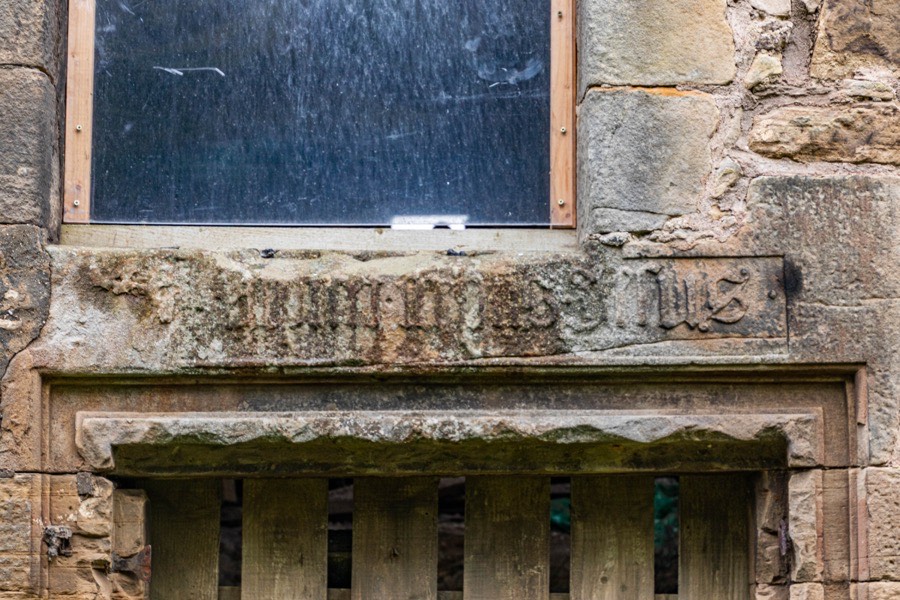
The rest of the basement level was accessed via a door on the north wall of the extension. Internally a scale-and-platt staircase was built against the east gable of the old tower at the west end of the new wing. The new rooms, along with those in the old tower, were decorated with wood panelling and plasterwork ceilings. To the south of the courtyard formal gardens were laid out complete with summer house and terrace walk.
Sir Alexander resigned some of Lord Balmerino’s former lands over the following years and in 1613 Lord Balmerino’s son, John Elphinstone, 2nd Lord Balmerino was restored to the majority of his father’s properties, however in 1615 Alexander received a new grant of Ballumbie. Later that year the 2nd Lord Balmerino received a new grant of the tenandry of Ballumbie which the Drummonds had resigned.
Sir Alexander died in July 1619 and was succeeded by his youngest brother, Sir Robert. Sir Robert was married to an heiress and sister of Hamilton of Buncie and may have commissioned a fine painted ceiling featuring cinquefoil motifs, the Hamilton charge. They had one son, Captain Alexander, who was killed at the Battle of Auldearn in 1645, and two daughters, Jean, who married Sir John Bruce of Kincavel, son of Sir Alexander Bruce of Airth, and Mariote or Marion, who married John Hay of Easter Kennet, son of Alexander Hay of Easter Kennet.
In 1643 Sir Robert Drummond was one of several lairds tasked with collecting taxes from the sheriffdom of Linlithgow and later the same year he was appointed to the committee of war for the same county. Two years later he was appointed to a commission to control the spread of the plague in the county. Later in 1645 he was granted a commission as a judiciary in the trial of Gavin Bell who stood accused of buggery. In 1649 Sir Robert and James Gibb of Carribber granted to David Hay, son of John Hay of Easter Kennet, the lands of Woodcockdale which Sir Robert’s father had occupied half a century earlier.
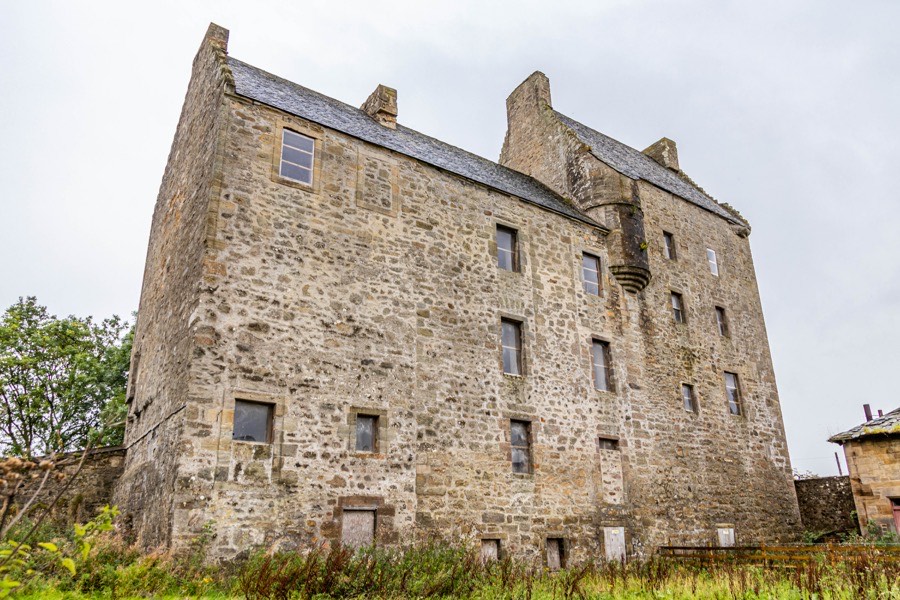
In 1650 James Hamilton, 2nd Earl of Abercorn, resigned the lands and barony of Abercorn to George Seton, 3rd Earl of Winton, and George’s son, Alexander Seton, was created Viscount Kingston by Charles I the following year. In December 1661 Viscount Kingston assigned the lands and barony of Abercorn to Walter Seton who paid the Viscount £3000 Sterling and received a charter of confirmation in January 1662.
The lands and barony at this time consisted of “the lands of Duddingston, Duntarvie, the arable lands of Winchburgh, the lands of Philipstoun, Gallowscruik Binns, Manerstoun, Easter and Wester Scotstoun, Mirrielees, Greigfoot, Cauldcoats, .. Meidhope with tower” and “the office of Sheriff of Linlithgow with fees, casualties and privileges and the dominical lands of Abercorn, the mill and lands of Mortoun, and the burgh of Newtoun of Abercorn.”
In 1664 Midhope was acquired by George Livingston, 3rd Earl of Linlithgow, who presumably held them from Walter Seton. It was he who added a Renaissance segmental pedestal carved with an earl’s coronet and the initials GL, for George Livingston, above the main doorway.
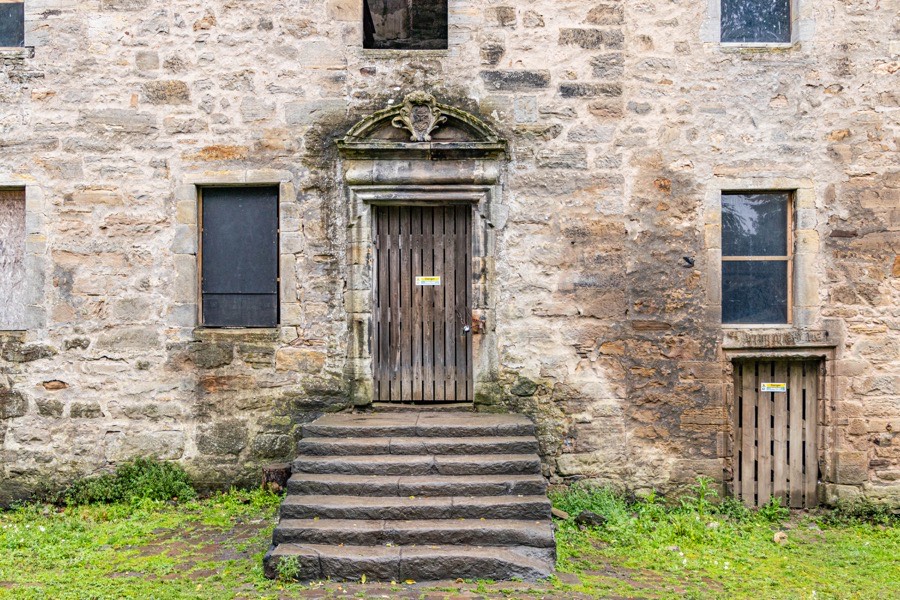

Sir Robert Drummond of Medhope is on record in 1667 however his designation may just be a legacy of his former possession. Sir Robert died in 1671 and was survived by his wife, Marjorie Hamilton.
Sir Walter Seton struggled to afford the upkeep of his estates and in 1678 sold the barony of Abercorn and the Sheriffdom of Linlithgow to John Hope of Hopetoun who in the same year bought the barony of Niddry and Winchburgh from George Seton, 4th Earl of Winton.
Either in the same year or soon after Midhope was remodelled. A southern entrance tower was removed and the wing to the east was heightened by a further storey and extended further eastwards with the addition of two further bays. The building now measured around 25.0m east to west by around 8.8m north to south. The scale-and-platt staircase was replaced with a fine example in oak featuring twisted balusters rising from the first floor to the new fourth floor.

A new courtyard was added to the south, presumably replacing an earlier enclosure, measuring around 35.0m east to west by around 19.0m north to south with the castle forming the north side. The east wall was decorated with ball finials. Access to the courtyard was via an arched ashlar gateway in the east wall, above which was a now empty niche for an armorial panel.


John Hope drowned in the sinking of HMS Gloucester in 1682 and was succeeded by his one year old son, Charles. Between 1699 and 1702 Hopetoun House was built to replace Midhope, and in 1703 Charles was created Earl of Hopetoun. According to the Statistical Account of Scotland the Earl of Linlithgow still lived in the castle in the early 18th century although in 1710 Sir Robert Sibbald described Midhope as a “fine Tower-house with excellent Gardens, one of the Seats of the Earl of Hopeton”.
The 3rd Earl of Linlithgow died in 1690 and was succeeded by his son, also George, who died in 1695 and was succeeded by the 4th Earl’s nephew, James Livingston, 4th Earl of Callendar. Around 140m to the south-east of the castle is a late 17th century lean-to doocot. Carved over its doorway are the initials JL, for James Livingston. The doocot may have been constructed or perhaps rebuilt around this time.
The 5th Earl of Linlithgow fought at the Battle of Sheriffmuir in 1715 and was convicted of treason, with all of his estates and titles forfeited. In the first half of the 18th century the castle was occupied by Captain Lawrence Drummond, second son of John Drummond of Pitkellony. By 1845 however it housed farm labourers when it was described as being in a state of “tolerable preservation”. The 1851 census lists a total of 53 people living in and around Midhope. When MacGibbon and Ross visited in 1887 the castle was occupied by “pensioners of the Hopetoun family”.
In 1926 the castle was again being used to house farm labourers when the staircase was described as “sadly dilapidated”. Midhope Castle was designated a Scheduled Monument in 1950 but the West Tower’s roof was removed by the estate around 1956 and the castle was derelict and deteriorating by 1962.

Damage to the first floor ceiling at this time revealed painted pine beams and boards underneath the plasterwork while fragmentary remains of painted decoration on the walls was noted. The fragments of the ceiling boards were painted with an astrological theme, with gold stars on a blue back background. Some sources state that this was to echo the Drummond family’s Latin motto of “reach for the stars”, however their motto is in fact “virtutem coronat honos” meaning “honour crowns virtue”. The boards were removed and are now in storage, while the beams were removed and were later installed in Abbey Strand in Edinburgh following restoration work there in 1967.
The castle was Category A listed in 1971 but by the 1980s it was a windowless shell, with the East Wing’s roof in a precarious state. Consolidation work was undertaken by The Pollock Hammond Partnership in 1986. Decaying woodwork was removed and during the work wall paintings were revealed.
One in the central room of the second floor covered the north half of the east wall and featured a trompe l’oeil of a church-like blue room with arches and black and white chequered floor tiles, although the upper part had been eroded away. Another above a fireplace in the east wall of the tower house’s first floor featured two red hunting dogs leaping over the fireplace. Although both the Hopetoun Estate and The Royal Commission on the Ancient and Historical Monuments of Scotland were informed of the findings no conservation work was carried out and the paintings were subsequently lost. Some rooms still retain sections of panelling and plaster cornices.
In 1988 the remnants of the old roof on the East Wing were removed and replaced and a new roof was installed on the West Tower, with new window frames inserted into the existing window openings. The following year a cobbled surface was unearthed within the courtyard to the south of the castle.
Midhope Castle was chosen to appear in the television series Outlander in 2013, featuring as Jamie Fraser’s home of Lallybroch, also known as Broch Tuarach.
The castle was de-scheduled in 2018 although it remains listed and although there is no access to the interior the exterior can be viewed upon payment of a fee to the Hopetoun Estate.
Alternative names for Midhope Castle
Meadop; Medhop; Medhope; Medoip; Medoipe; Medop; Medope; Medophop; Meedhope; Meedop; Meedope; Meidhoip; Meidhop; Meidhope; Meidop; Meidope; Middop; Midhoop; Midhope House; Midhope Tower; Midop; Mydhoip; The Medope





